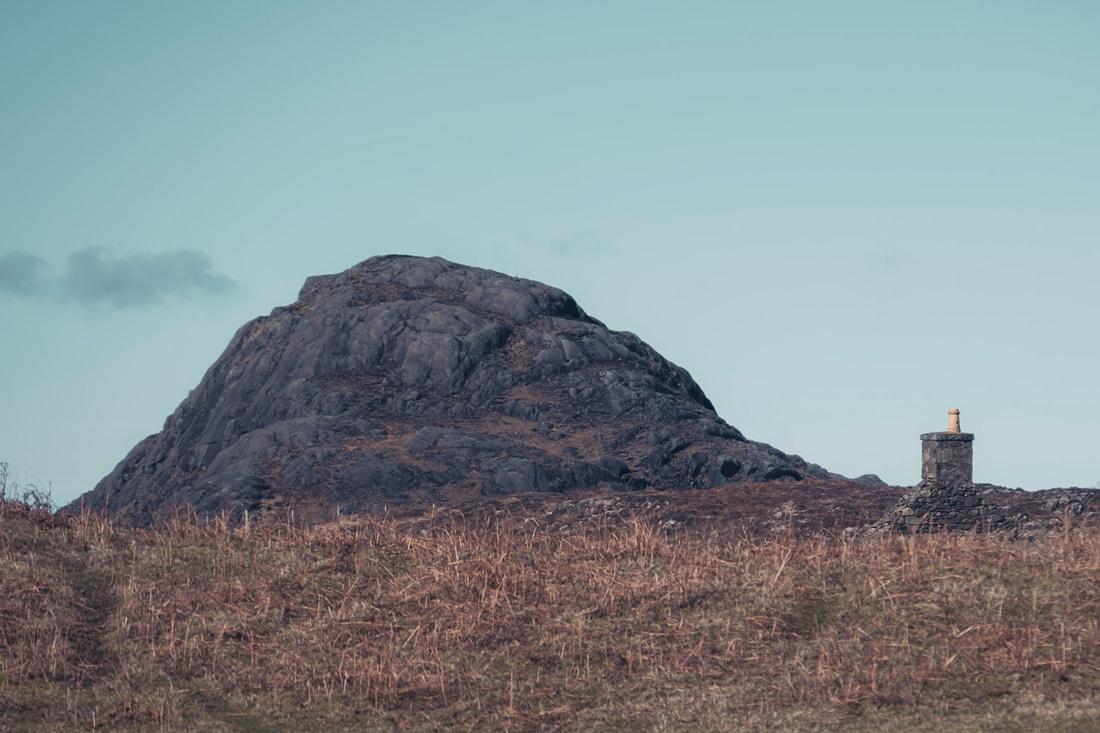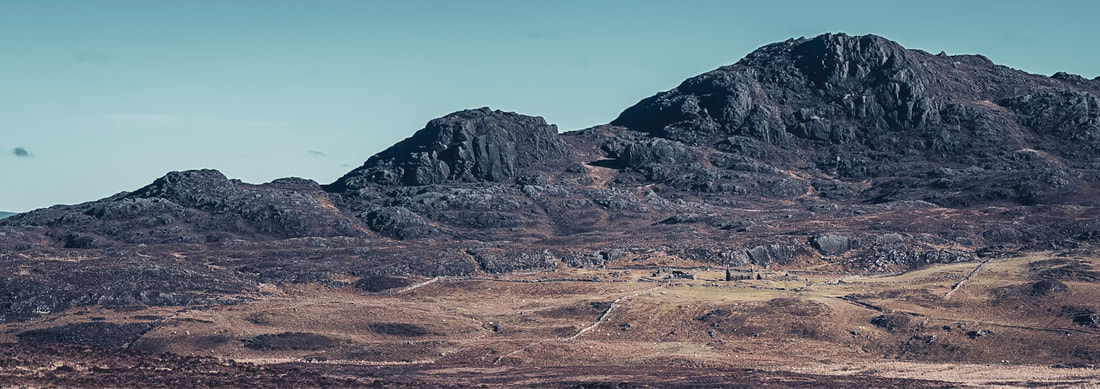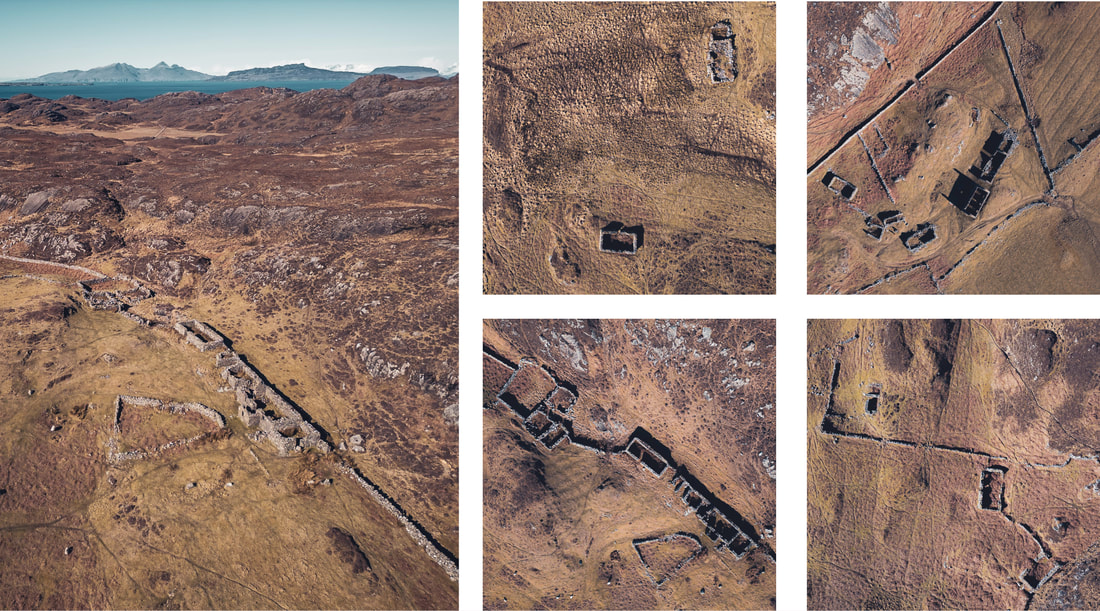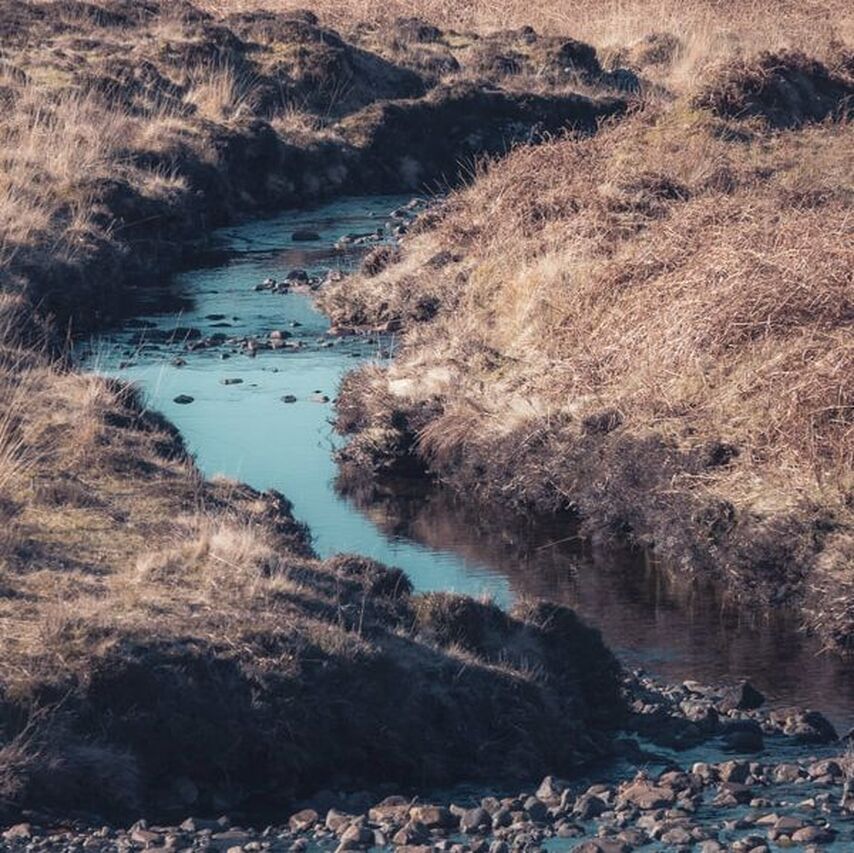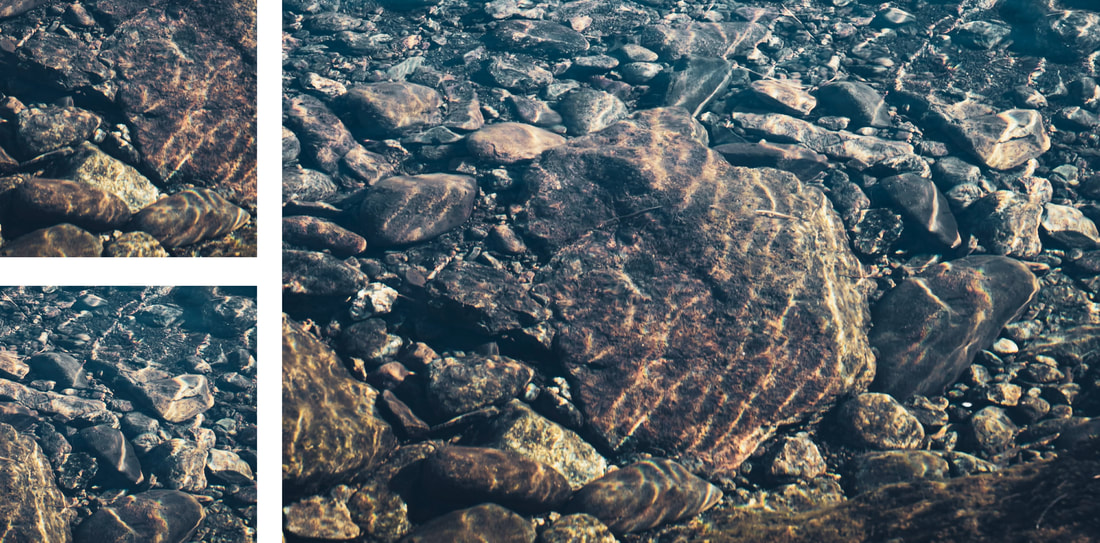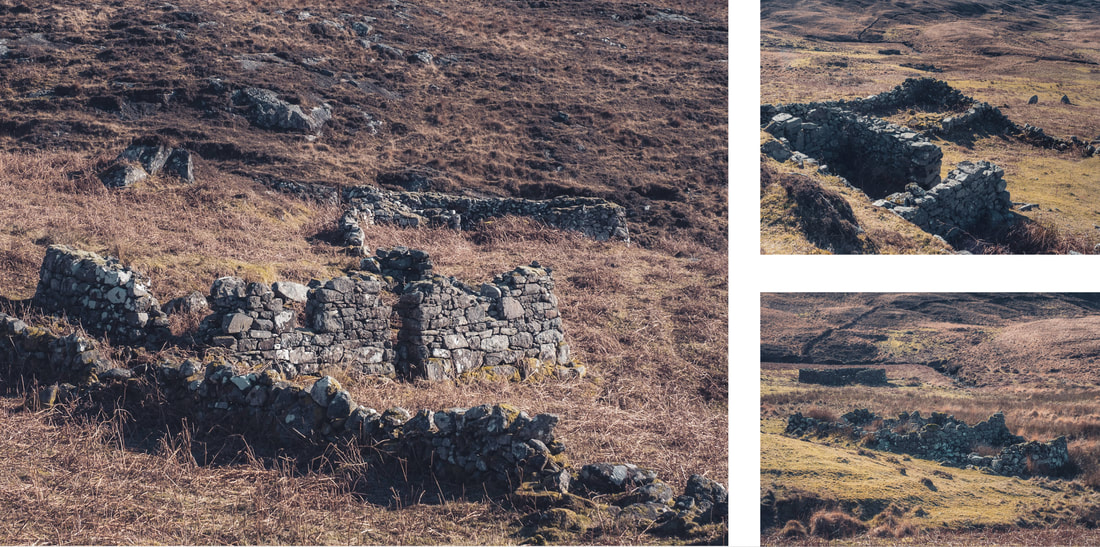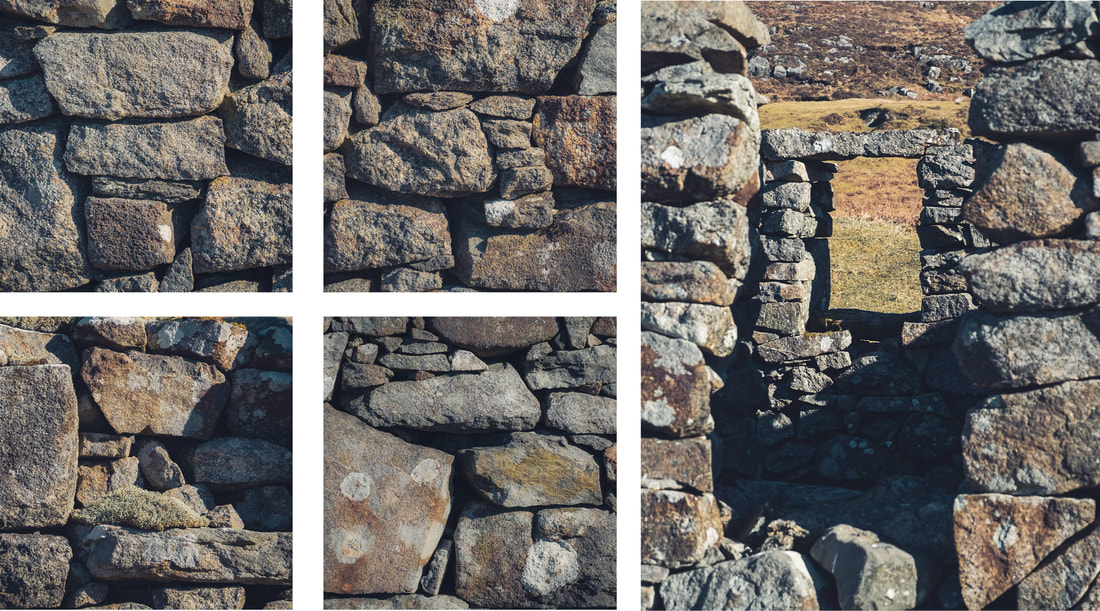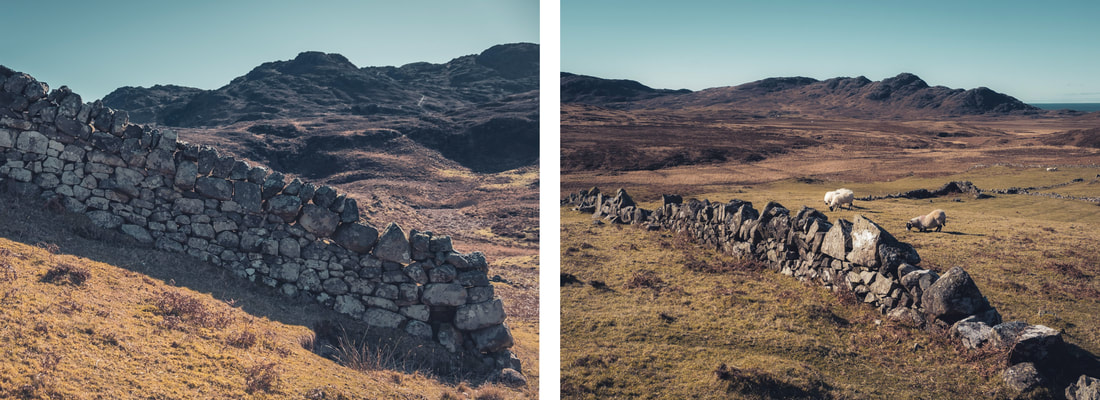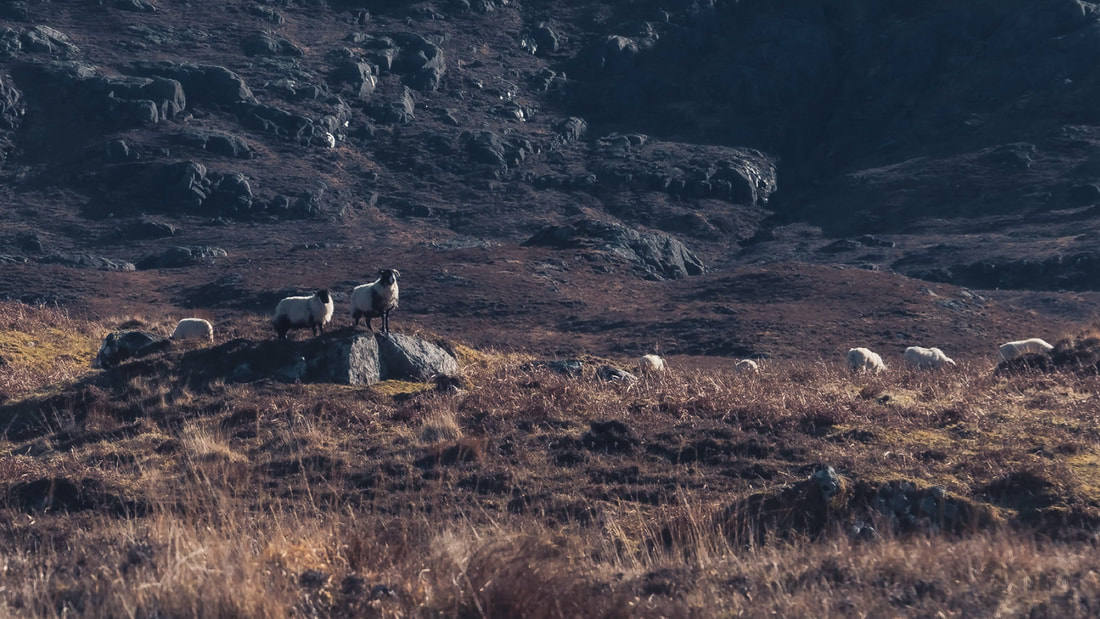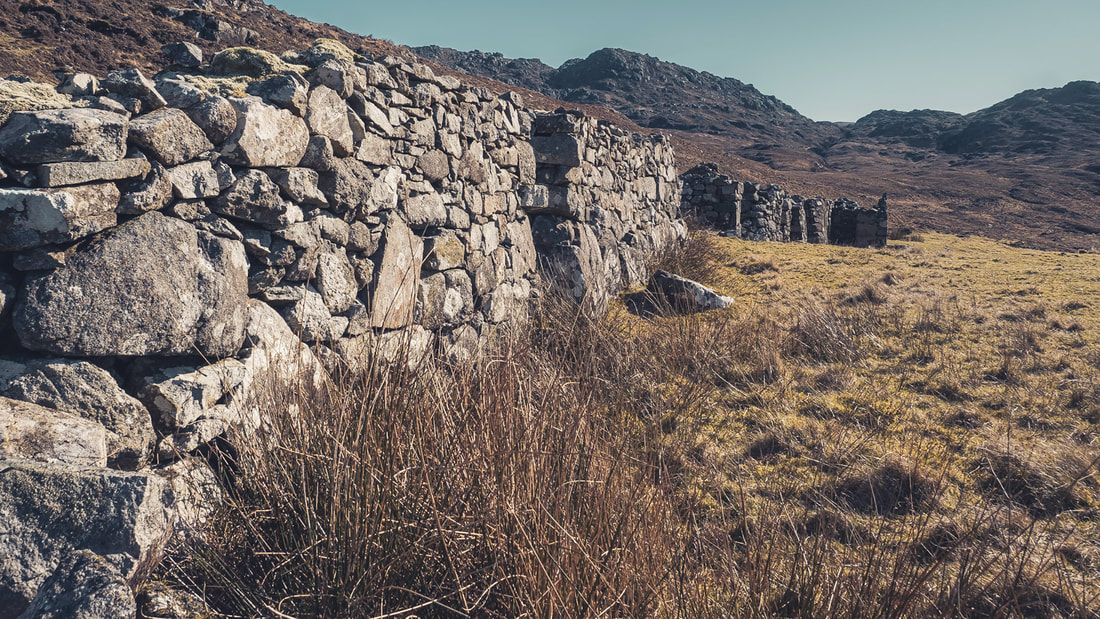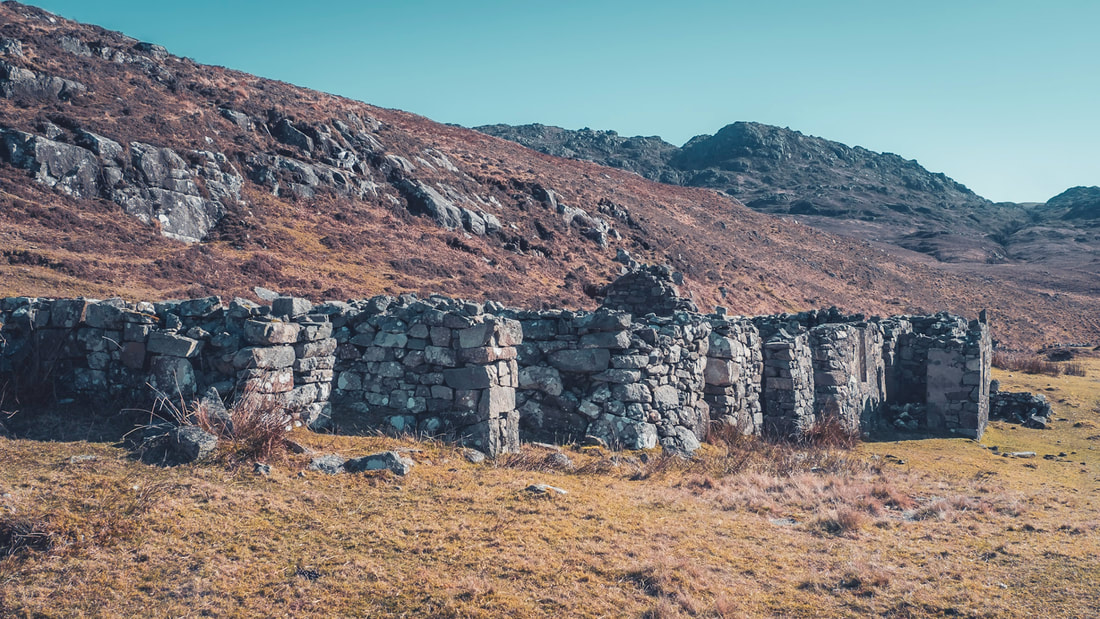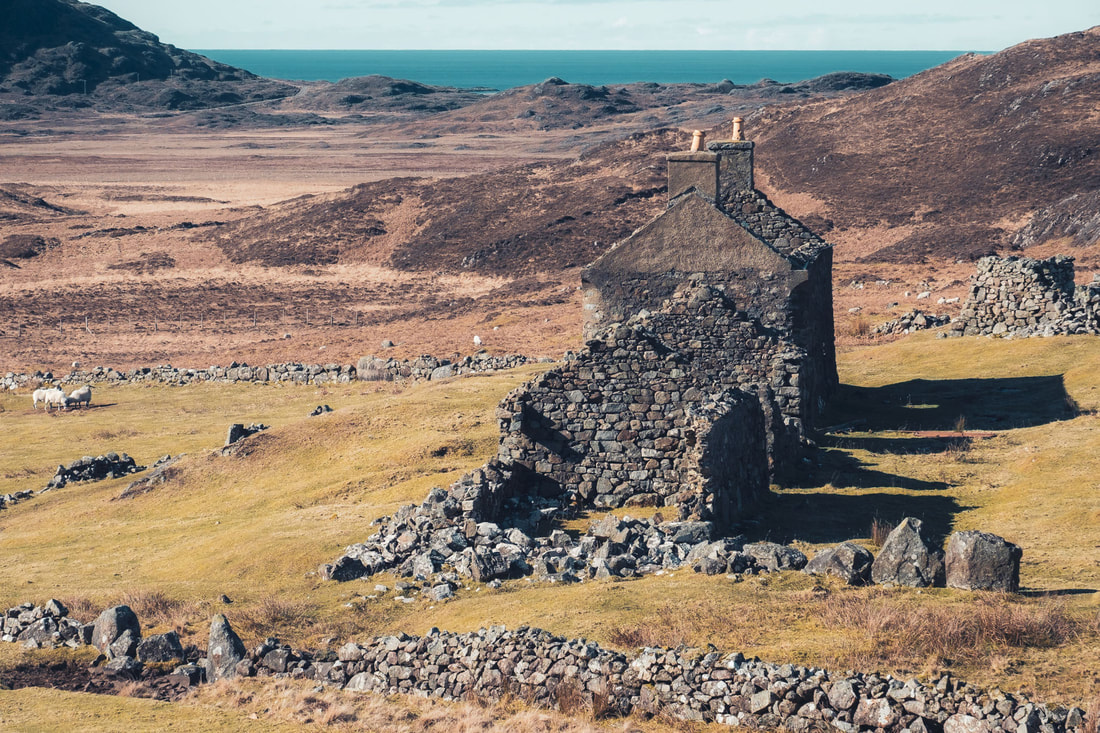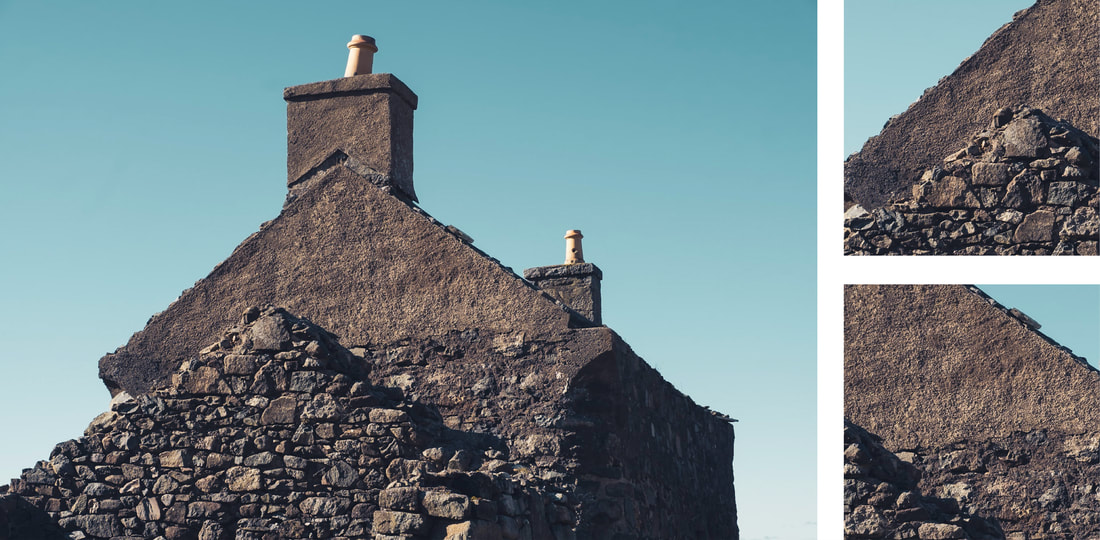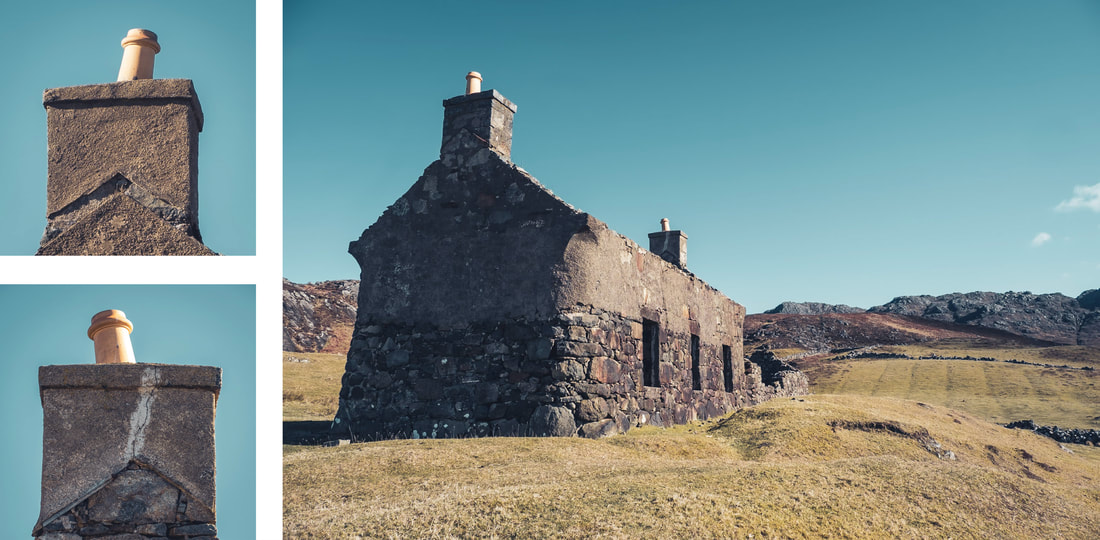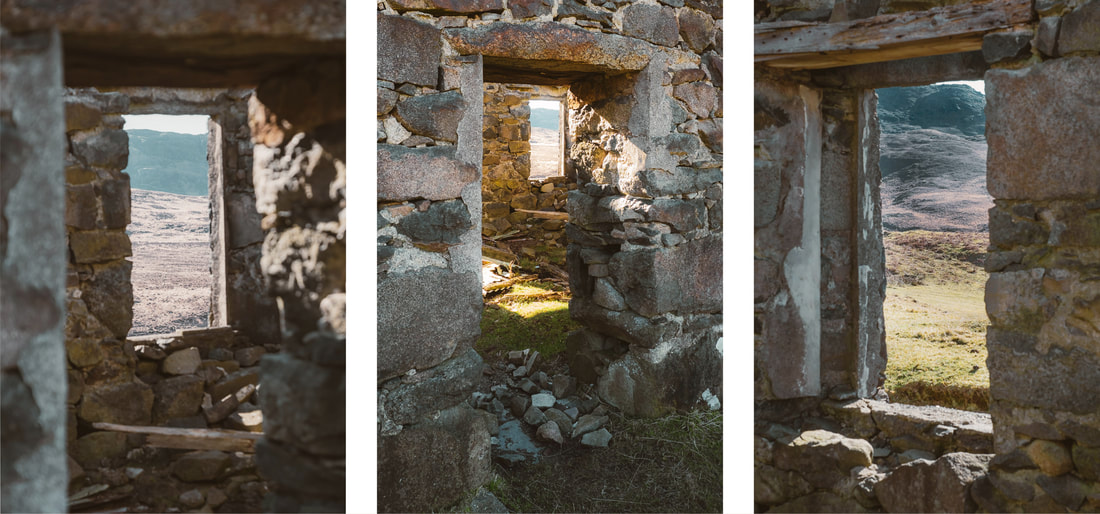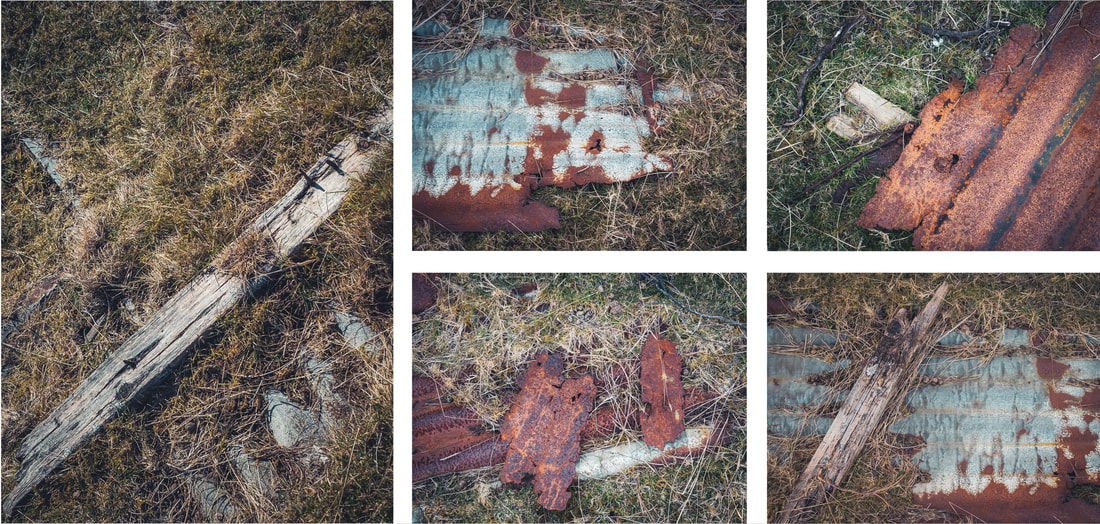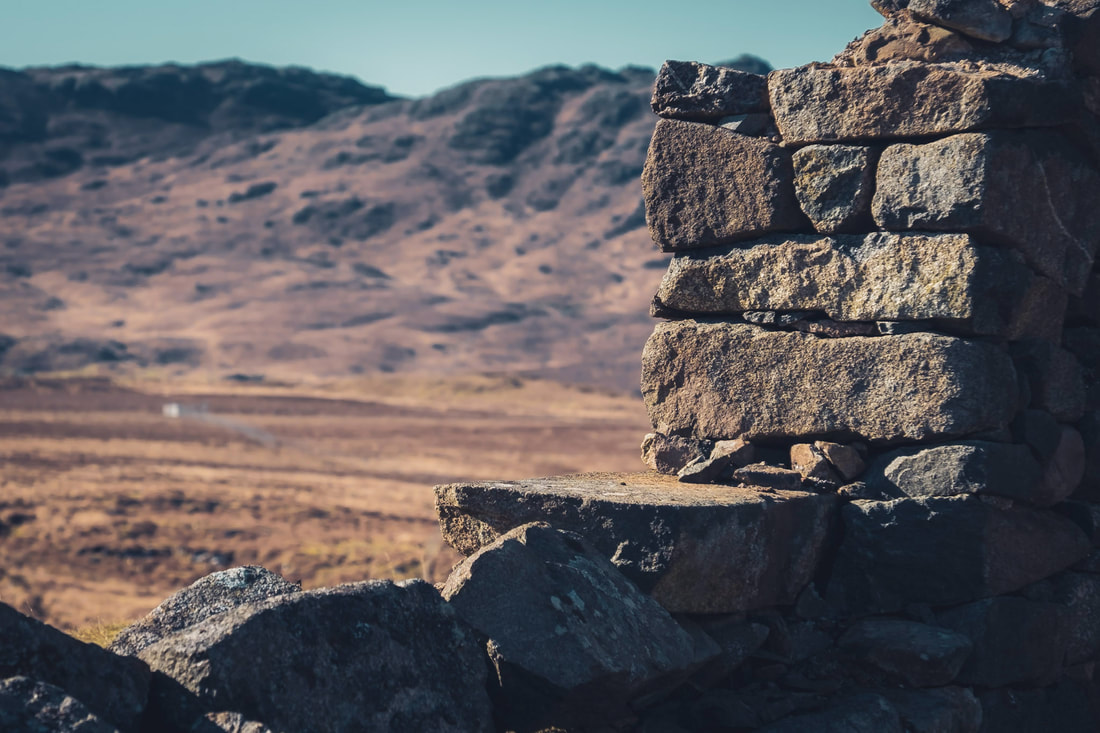|
Photography is not always about taking photos and April was a case and point. I spent a large proportion of the month off the Peninsula, so only managed to get a couple of opportunities to be behind the viewfinder and unfortunately, they did not yield much that I was happy with. Fortunately, I was able to find time to sort through, sequence and edit a set of images that I had taken on a bright spring day last year when I visited the abandoned crofting township of Glendrian at the west end of Ardnamurchan. It is a fascinating and somewhat poignant place to be. It is a “thin place” where you can feel a heightened awareness of being very close to the past while you wander through the ruins of its abandoned buildings, the last of which was vacated in the early 1940s. Glendrian sits on the low land within the circle of hills that form the crater of the long extinct volcano that you drive through on your way to the beach at Sanna. It is about 2 kilometre walk from where you park and the first part of the walk takes you up a short uphill section at the start of an estate track that leads all the way to the settlement. At the top of this short climb, you pass through a kissing gate and from there, the view opens up to the east and you catch your first glimpse of some of the houses sitting beneath the hulking black rocks that form the ring dyke of the volcano. These houses are part of a settlement that is made up various structures, from small round cornered buildings with only one or two windows, through to more substantial gabled buildings with chimney pots and harled exteriors. They are scattered across a large area running roughly south to north along the eastern edge of the ring dyke and, as you wander around them, you often catch glimpses of the sea, which is about another 2 kilometres beyond the settlement. As you get close to the first of the houses, you cross the Allt Nead an Fhìr-eòin, a small river which I assume was the main source of water for those who once lived there. It is such a quiet spot and I found myself sitting there for a while watching the sunlight dance across the rocks beneath the rippling water. The first group of houses, located at the southern end of the settlement, are the most modest and appear to be the oldest. Some sit on their own, isolated in the landscape, while others are built into the hillside and have what look like small byres attached to them. They are also the most ruinous of the buildings, which perhaps suggests that they were the first to be abandoned. Research suggests that this may have happened in the late 19th century when the smaller crofts at Glendrian were gradually merged together to form larger tenancies, resulting in the number of households dropping from ten at the time of the 1861 census to three at the time of the 1901 census. Unlike many of the old crofting settlements in the Scottish Highlands, Glendrian was not subjected to the brutality of the mass evictions of the “Clearances”. Instead, its population was gradually decreased by changes in land management practices, but despite this, it was incredibly poignant to sit on the hillside and watch sheep graze in a place where people once lived. A place that they once called home. By the late 1930s, only two families remained. One of these families was the Hendersons, who occupied a terraced group of buildings that can be found mid-way along the settlement, high up on a piece of relatively flat ground at the base of the ring-dyke of the volcano rises upwards behind it. The buildings are more intact than those to the south, with the apexes of the gable ends of the croft house still standing and harling still visible on some of its external walls. Its last occupants, Donald and Mary Henderson, moved to Kilchoan shortly after their son Angus was born in 1940. Below the Hendersons, lived the MacLachlans, who occupied what is the most significant building remaining in the settlement, a two-storey house which was built around 1871. Although basic by today’s standards, it was far better appointed than the other buildings in the settlement with its chimney stacks at each end serving three fireplaces. Two at one end, ground and upper floor, to provide heat and one on the ground floor at the other end for cooking. This “new house” was first occupied by Allan MacLachlan shortly after it was built, and its last occupants were John MacLachlan and his wife. John died in 1941 and his now widow moved to Achnaha to stay with her nephew, leaving Glendrian abandoned to this day. The house resisted the elements for a good number of years with its roof finally coming down during a storm in 1994 and one visitor reported that the upper floor remained in place until as late as 2009. Just over a decade later, there is not much left of anything that isn’t stone, with the doors, windows, floors and roof now long gone. All that remains are some fragments of the corrugated tin roof and some pieces of timber supports, all of which now lie on the ground on the eastern side of the house after presumably being blown there by the winds of that fateful 1994 storm. After photographing in and around the house, I explored the outbuildings that were attached to it, ending my visit by surveying the expansive view of the volcanic caldera from the elevated position that a once thriving community had occupied. While doing so, I began pondering on how the ruins of nearly twenty buildings remained following the 80 years over which the settlement was gradually abandoned and the just over 80 years since the last occupant left. While doing so, I couldn’t begin to imagine the mixture of emotions that the last occupant might have felt as they closed the door on their home for the last time.
4 Comments
Liz Tutty
5/5/2024 19:26:22
I too have wandered through the ruins of Glendrian and found it a place that calls out to the visitor. The ruins are so poignant and the ridge and furrow ploughing shows in the adjoining fields quite clearly. I quite expected to see a horse and plough. I love these images and to see the aerial views brings another dimension. I shall be going back.
Reply
Kathleen M. Haskins
7/5/2024 16:52:30
I was transfixed by this story and the photos. If and when I get to Scotland, I would love to come here.
Reply
Hi Kathleen,
Reply
Your comment will be posted after it is approved.
Leave a Reply. |
AuthorHi, I’m Steven Marshall, a Scottish landscape photographer based at Rockpool House in the heart of the beautiful West Highland Peninsulas of Sunart, Morvern, Moidart, Ardgour and Ardnamurchan. Categories
All
Archives
June 2024
|
Steven Marshall Photography, Rockpool House, Resipole, Strontian, Acharacle, PH36 4HX
Telephone: 01967 431 335 | Mobile: 07585 910 058 | Email: [email protected]
Telephone: 01967 431 335 | Mobile: 07585 910 058 | Email: [email protected]
All Images & Text Copyright © 2024 - Steven Marshall - All Rights Reserved

